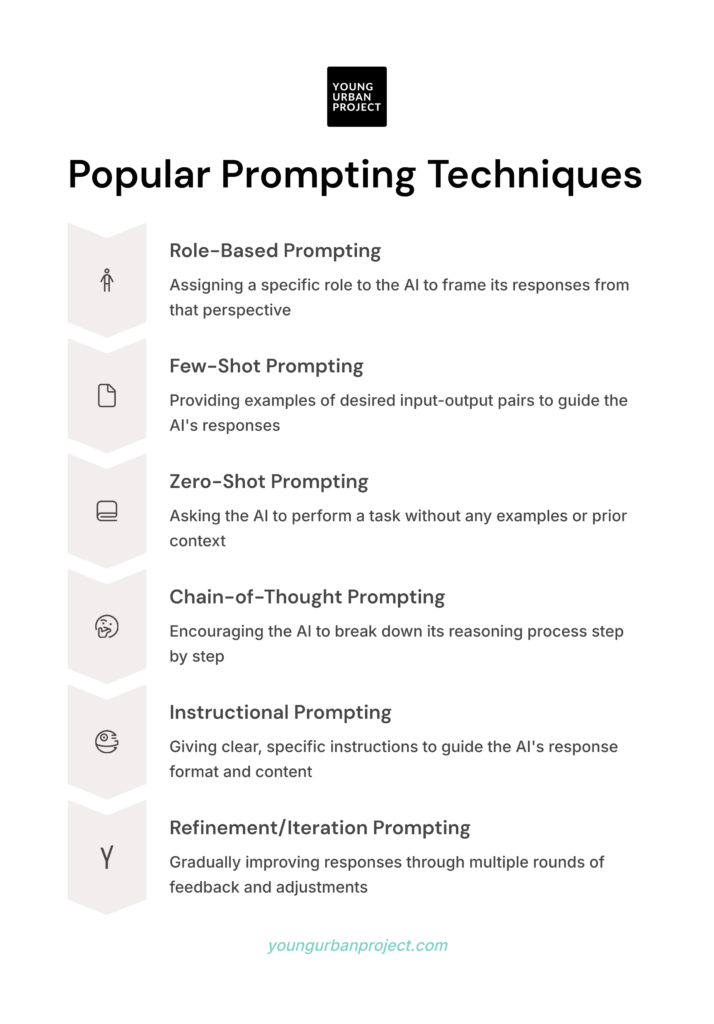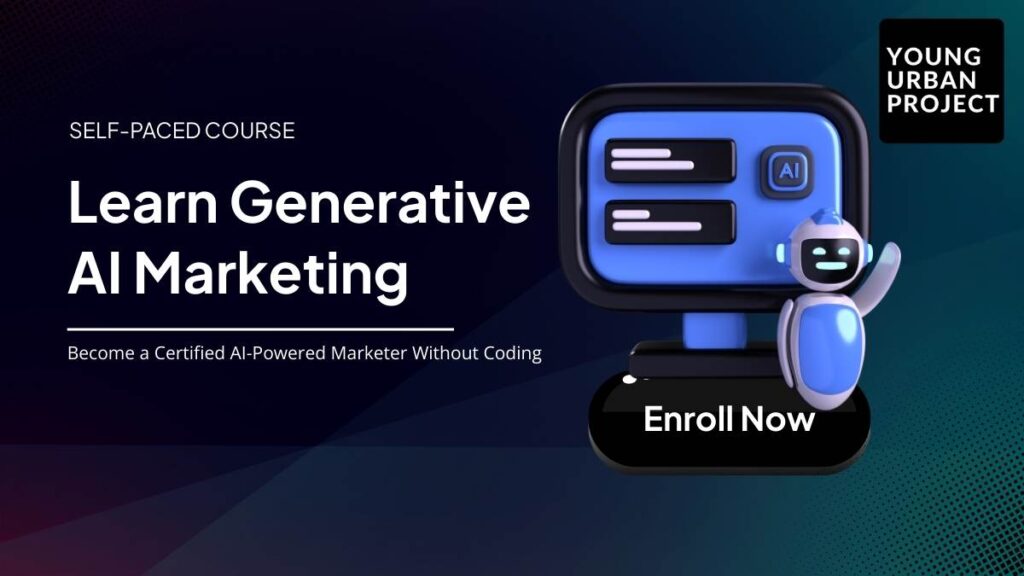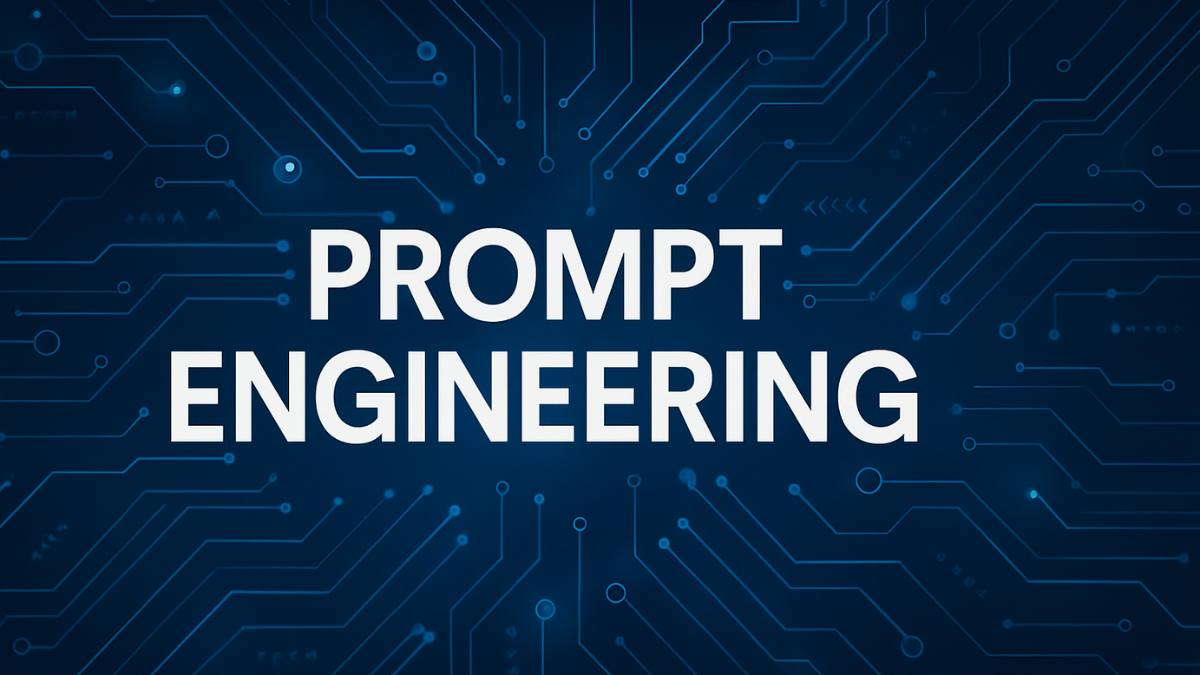In the age of AI tools like ChatGPT, Gemini, Claude, and Midjourney becoming part of our daily workstreams, one skill is quietly becoming more valuable than ever: prompt engineering.
Table of Contents
But what exactly is prompt engineering? Is it really worth learning? And what are some practical techniques that can help you get better outputs from AI tools?
In this blog, we’ll dive deep into everything you need to know about prompt engineering. Whether you’re a marketer, content creator, business strategist, or just a curious learner, this post is going to break it all down in a very human way (no boring jargon dumps, I promise).
What is a Prompt?
Let’s start simple. A prompt is the input you give to an AI model to get a desired output.
Think of it like this: if you were asking a super-intelligent intern to do something for you, the clearer and more specific your request, the better they can deliver. That’s what a prompt is for AI. It can be a question, a command, a context, or even a full conversation setup.
Examples of prompts:
- “Write a tweet thread about the benefits of email marketing.”
- “Explain blockchain to a 5th grader.”
- “Give me 10 blog title ideas on the topic of personal branding.”
- “Act as a UX expert and suggest improvements to my app’s onboarding screen.”
The AI doesn’t just guess what you want – you have to guide it. That’s where prompt engineering comes in.
What is Prompt Engineering?
Prompt engineering is the practice of crafting effective prompts to get accurate, relevant, and high-quality responses from AI systems.
It’s part science, part art.
The goal is to reverse-engineer how the AI thinks and structure your inputs in a way that steers its massive knowledge base toward your desired outcome.
And it’s not just about getting any answer – it’s about getting the right one. A few small changes in a prompt can dramatically change the result.
This becomes especially important in:
- Marketing copywriting
- SEO content generation
- Data analysis & summaries
- Business idea validation
- Coding assistance
- Designing workflows using automation tools
Also Read: Marketing project topics + ChatGPT prompts
Why is Prompt Engineering Important?
Here’s the real talk: AI tools are only as good as the prompts you feed them.
You can be sitting on one of the most powerful tools ever made, and still get mediocre results because your input was too vague or poorly structured.
Here’s why prompt engineering is crucial:
- Saves Time: Instead of going back and forth with the tool, a good prompt gets you 80% there in one go.
- Boosts Quality: Well-engineered prompts produce sharper, more relevant, and context-aware content.
- Reduces Errors: Clear instructions help the AI avoid misunderstandings or hallucinations.
- Customizes Outputs: You can shape the tone, length, format, and detail of your output.
- Makes You AI-Savvy: As AI becomes more embedded in work, prompt literacy is a career skill.
The difference between an amateur AI user and a pro? Often, it’s not the tool itself – it’s how they prompt it. Think of it like search engines: we all use Google, but some people know how to search better.
Popular Prompting Techniques (With Examples)
Alright, let’s dig into the good stuff. These are some of the most popular and proven prompting techniques. I’ll also give you examples for each.

1. Role-Based Prompting
This technique asks the AI to adopt a specific role or persona.
Why it works: It creates context and narrows the focus.
Example:
“You are a LinkedIn growth strategist. Suggest a content strategy for a solopreneur building a personal brand.”
2. Few-Shot Prompting
You provide a few examples of the input-output format you expect.
Why it works: The AI picks up patterns and mimics the desired structure.
Example:
“Here are some blog title ideas:
- The Secret to Writing Emails People Actually Read
- How to Build a 6-Figure Side Hustle with No Team
- The Real Reason Your Ads Aren’t Converting
Now generate 5 more in the same style.”
3. Zero-Shot Prompting
This is when you ask the AI to perform a task without providing any examples.
Why it works: It’s quick and useful when the task is straightforward or the AI has strong contextual understanding.
Example:
“List 10 Instagram reel ideas for a fitness coach.”
4. Chain-of-Thought Prompting
You encourage the AI to show its reasoning or step-by-step thinking.
Why it works: Especially useful for logical tasks or complex decision-making.
Example:
“What would be the ROI of spending $5,000 on Facebook ads with an average cost-per-lead of $20 and a conversion rate of 10%? Show your calculation.”
5. Instructional Prompting
Give very clear and structured instructions.
Why it works: It removes ambiguity.
Example:
“Write a 200-word blog intro on SEO for beginners. Use a friendly tone. End with a question to engage the reader.”
6. Refinement/Iteration Prompting
You build on a previous output by giving feedback or asking for improvements.
Why it works: Allows you to polish content to your standards.
Example:
“Make this paragraph more concise and persuasive.”
This is where AI really becomes collaborative. You don’t have to get it perfect on the first try.
What Are the Benefits of Using Prompting Techniques?
You might be thinking, “Why go through all this effort? Can’t I just type what I want?”
Well, you can, but it’s like asking a Michelin-star chef to cook with no ingredients or guidance. The outcome will vary.
Here are some key benefits:
- Control: You can dictate tone, style, depth, and angle.
- Precision: You avoid vague, generic answers.
- Productivity: One solid prompt = less time editing.
- Learning: You understand how AI “thinks” and improves your own communication skills.
- Scaling Work: Prompting techniques help you build reusable prompt libraries.
When you use prompting techniques well, it’s like unlocking extra horsepower in the engine. You can go from basic to brilliant.

Enroll Now: Generative AI for Marketing Course
Why Combining Techniques Is Even More Powerful
Prompting isn’t one-size-fits-all. In real-world use, layering techniques gives you far more nuanced and accurate results.
Let’s say you want:
- A 10-part email sequence for a product launch
- That sounds like it’s from a seasoned SaaS copywriter
- Is based on your brand’s tone
- Includes A/B testable subject lines
You could:
- Use role-based prompting (“Act like a SaaS copywriter”)
- Add instructional prompting (“Each email should include a CTA and preview text”)
- Use contextual prompting by pasting your brand voice doc
- Add iteration prompting to fine-tune tone or clarity
Together, these techniques form a prompt stack. It’s almost like giving your AI tool a full creative brief.
Advanced Prompting Ideas (for the Nerds Among Us)
If you’re ready to go deeper, here are some advanced prompt engineering strategies:
Prompt Chaining
Break complex tasks into smaller, sequential prompts that feed into each other.
Example:
- Prompt 1: List 5 blog topics around AI in education.
- Prompt 2: For each topic, generate an outline.
- Prompt 3: Write the introduction for the first blog.
Template-Based Prompting
Create a template you can use over and over, especially useful in marketing.
Example Template:
“Write a [format] about [topic] using a [tone] tone. Include [number] key points and end with [CTA].”
Contextual Prompting
Provide background info or feed previous outputs to maintain context.
Example:
“Using the brand voice guidelines below, write an ad copy for the new product launch. [Insert guidelines]”
Real-World Use Cases of Prompt Engineering
Prompt engineering isn’t just a theory. It’s showing up in:
- Marketing: Copywriting, ad generation, content ideation
- Sales: Email sequences, objection handling scripts
- Customer Support: Automated but personalized replies
- Education: Lesson planning, quiz creation
- Programming: Code generation, debugging prompts
- Business Strategy: SWOT analysis, pitch deck creation
Let’s take one example:
Example: A content marketing agency
- Uses prompt chaining to build client content calendars
- Applies few-shot prompts for consistency in tone
- Saves 60% of the usual time spent on first drafts
Or a solo entrepreneur using Midjourney + ChatGPT prompts to build an Instagram brand that’s now earning affiliate income.
The Future of Prompt Engineering
As AI tools get more advanced, you might assume prompt engineering will become less relevant.
Actually, it’s the opposite.
Because as models become more powerful, the scope of what they can do expands. And that means the ability to guide and control these models becomes even more important.
Plus, businesses are now hiring prompt engineers as actual roles. Some are even paying six figures. Wild, right?
But even if you’re not looking to become a prompt engineer, this skill is still gold. It’s the key to getting 10x more out of your AI tools.
Final Thoughts
Prompt engineering is not just a “techy” skill—it’s a new kind of communication literacy. It teaches you how to work with machines the way we once learned to write emails or design slide decks.
And just like any skill, you get better with practice. Start simple. Experiment. Tweak. Iterate. Keep a prompt journal or Notion doc with ones that work.
The difference between mediocre and amazing AI output? It often comes down to the quality of your prompt.
So go ahead—try out a few techniques from this post. You might be surprised at what you unlock.

